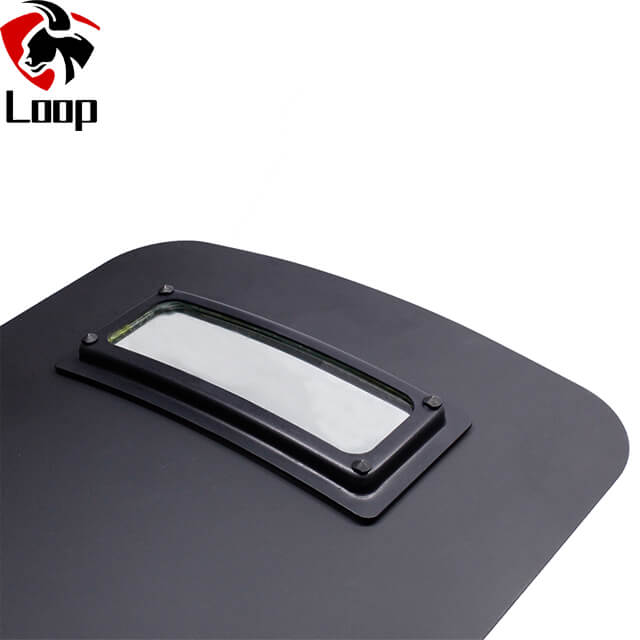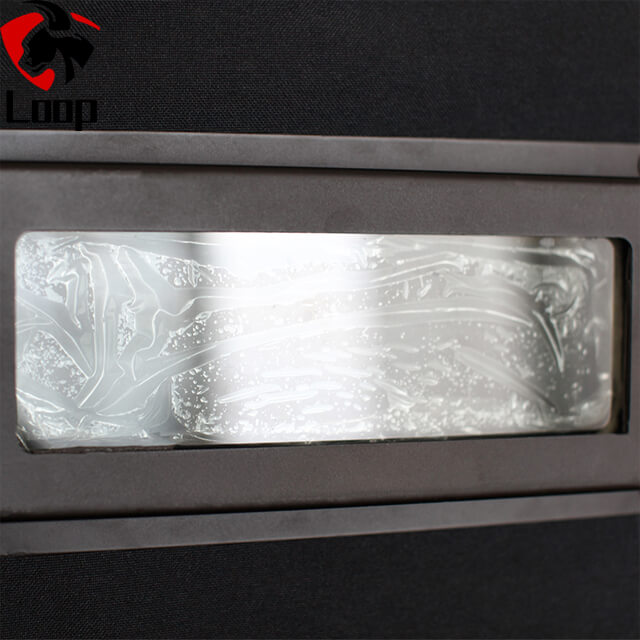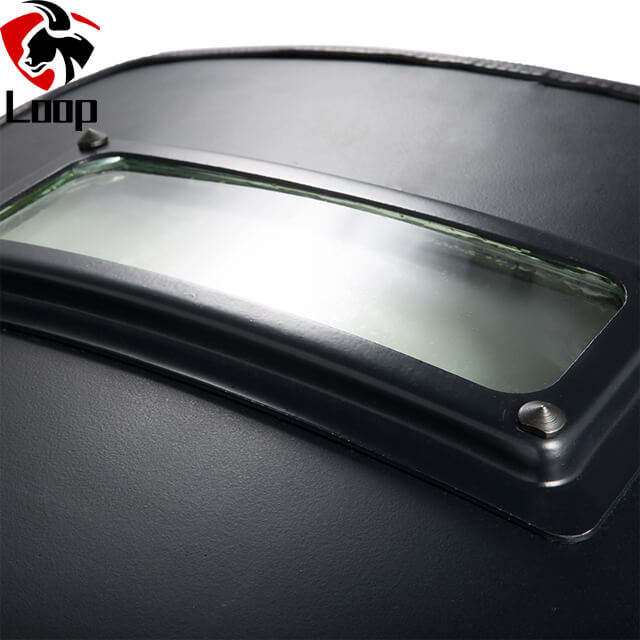Views: 0 Author: Site Editor Publish Time: 2025-09-15 Origin: Site
In an era where firearms and explosive threats are common, ballistic shields have become a standard piece of equipment in modern tactics and security tasks. This article takes a deep, yet accessible look at viewing windows on ballistic shields — a small but critical component that greatly influences tactical value.
In films and news reports we often see law enforcement or special forces personnel carrying ballistic shields as a protective barrier at the front line. The role of the ballistic shield is unquestionable: it can stop bullets, fragments, and blast effects, buying precious survival time for the user and the team. However, many people may not notice a small transparent “window” near the top of the shield — the viewing window.

Although it looks insignificant, the viewing window is one of the key design elements that determines whether a shield is “practical.” Many people think a ballistic shield only needs to be “strong,” but whether it has a high-quality viewing window directly affects the shield’s tactical value.
Shields are among humanity’s oldest protective tools. From bronze shields used by ancient Greek soldiers to the steel great shields of medieval knights, shields have always symbolized protection and courage.
With the advent of modern firearms, traditional shields largely lost their battlefield role. Yet, due to rising needs for urban counter-terrorism, law enforcement, and security missions, engineers began developing “new shields” capable of resisting firearms — the modern ballistic shield.
Advanced materials: Use of UHMWPE (ultra-high molecular weight polyethylene), aramid fibers, ceramic composites, and more.
Diverse structures: Rectangular shields, curved shields, lightweight portable shields, even shields with weapon apertures.
Extended functions: Modern shields often come equipped with lighting, camera mounts, and communication interfaces.
The viewing window is the crucial upgrade that gives the shield “eyes.”
Early ballistic shields lacked viewing windows, forcing users to poke their heads out to check the environment — a move that greatly increased exposure to fire. The development of transparent ballistic glass and polycarbonate materials made it possible to incorporate a “safe window” into the shield.
As tactical demands rose, viewing windows evolved:
Early versions: Limited visibility and heavy weight.
Improved versions: Multi-layer laminated structures with better light transmission and less distortion.
Modern versions: Anti-fog and anti-scratch coatings, compatibility with night vision and infrared devices, and integration with tactical camera systems.
Today, viewing windows have become standard on most tactical shields.

A qualified viewing window must satisfy three simultaneous requirements: transparency, protective capability, and safety. Achieving these together is a materials science challenge.
Viewing windows are commonly built from multi-layer glass + polymer laminates:
Outer layer: A hard transparent surface to withstand initial impact.
Middle layers: Multiple laminated layers that absorb and disperse projectile energy.
Inner layer: A protective layer to prevent glass fragments from flying into the user.
This laminated structure is similar to armored vehicle windows and blast-resistant architectural glass but typically requires even higher performance for tactical use.
Tactical Vision: Without a viewing window, a shield user is effectively “defending blindly.” With a window, they can continuously observe the forward environment while remaining protected.
Rapid Response: In missions, fractions of a second can determine the outcome. Viewing windows allow users to detect threats instantly.
Comprehensive Protection: Traditionally, confirming the situation meant exposing one’s head. The viewing window eliminates that dangerous movement.
Psychological Advantage: Opponents who see a shield with a viewing window realize they are being watched, which increases psychological pressure.

Law enforcement: During arrests or crowd-control actions, viewing windows let police stay protected while maintaining situational awareness of suspects’ movements.
Special forces: In clearing operations and raids, viewing windows let teams rapidly assess interior spaces and reduce surprises.
Protective escorts: During high-risk escort missions, shield viewing windows allow security personnel to monitor suspicious activity without sacrificing protection.
International differences: US and European SWAT teams often use large-area shields with viewing windows for entry and defense; in some Asian countries, police shields emphasize portability and mobility, so viewing windows tend to be smaller.
Correct posture: Keep the viewing window aligned with eye height to avoid blind spots.
Team coordination: The front-line shield user observes through the window while rear teammates allocate supporting fire accordingly.
Low-light conditions: Viewing windows can be used together with tactical lights or night-vision devices to maintain reconnaissance capability.
Field experience shows that mastering correct viewing-window use significantly improves team survivability and mission success rates.
Lightweighting: New transparent composite materials will further reduce weight.
Intelligence integration: Viewing windows may be equipped with HUDs (heads-up displays), thermal imaging, or other enhanced-vision functions.
Modularity: Future viewing windows may be quickly replaceable or upgradable to suit different missions.
Although the viewing window on a ballistic shield is just a small transparent area, its tactical significance far exceeds its size. It is not only the shield’s “eye” but also the bridge between tactical awareness and personal safety.
In modern security, law enforcement, and military operations, viewing windows are no longer optional — they are a core configuration of ballistic shields. They transform shields from mere protective devices into mobile tactical platforms capable of observation, reconnaissance, and command.